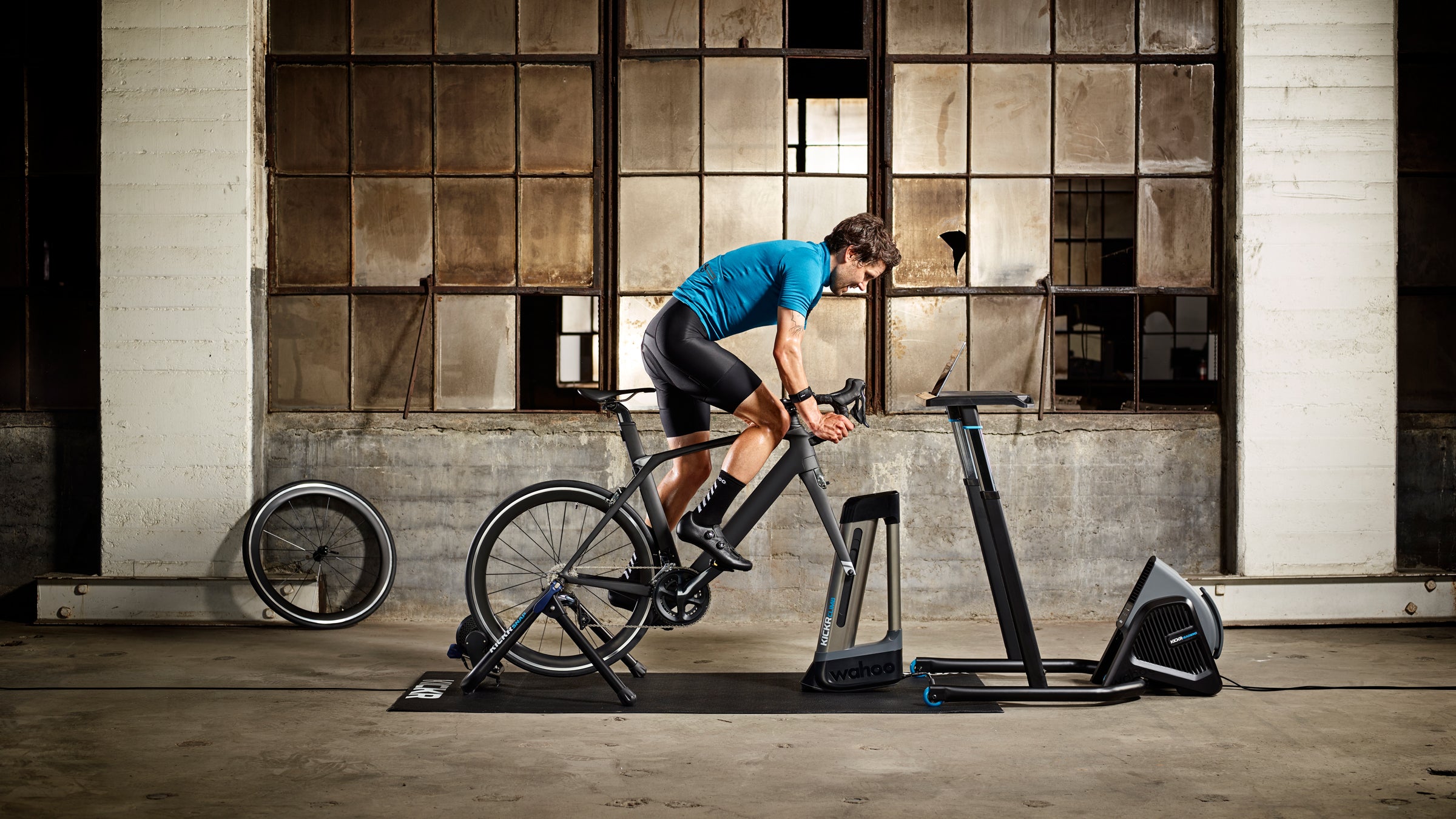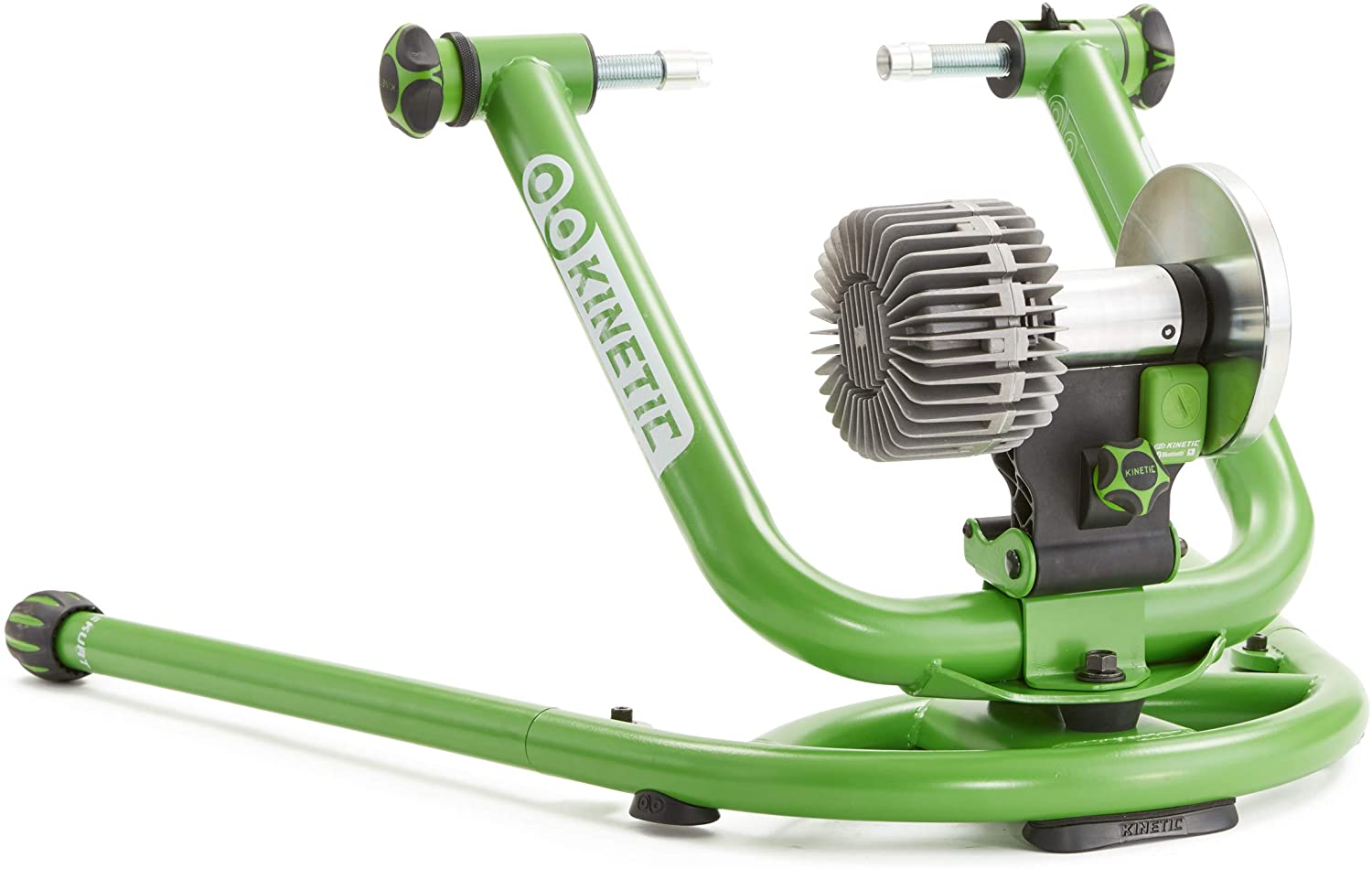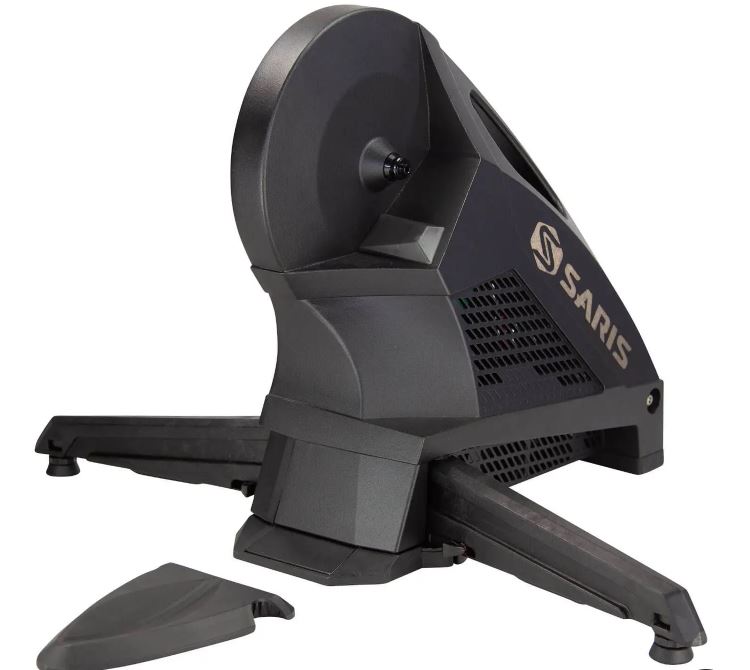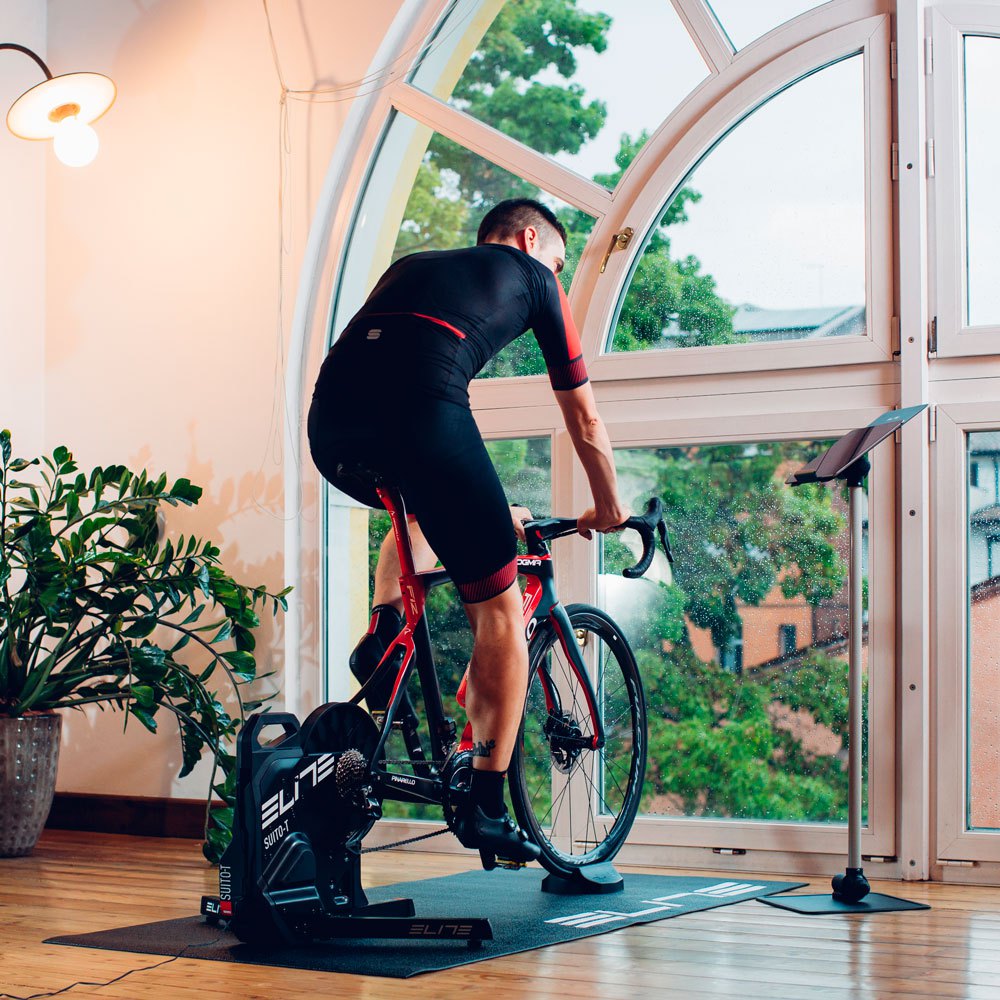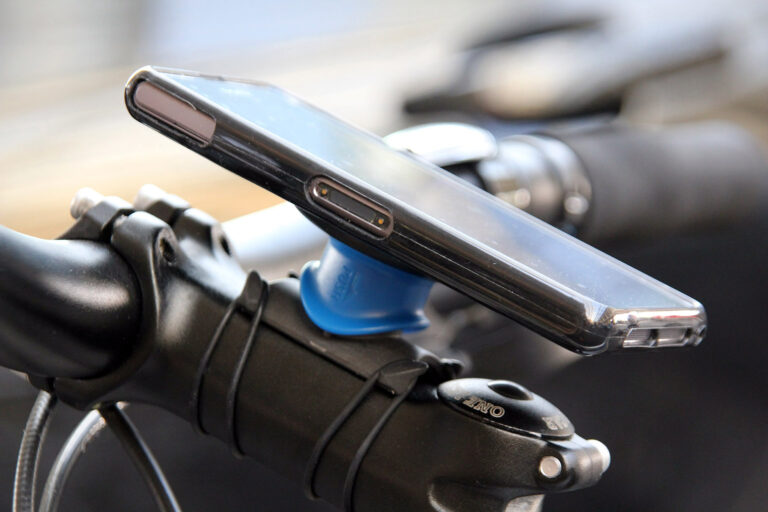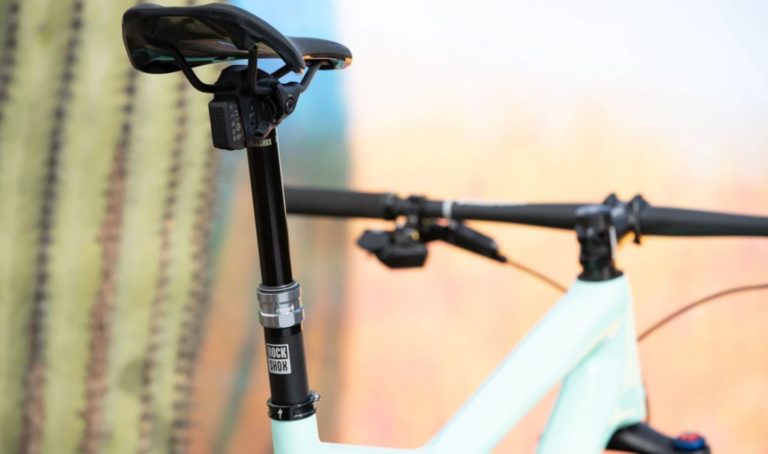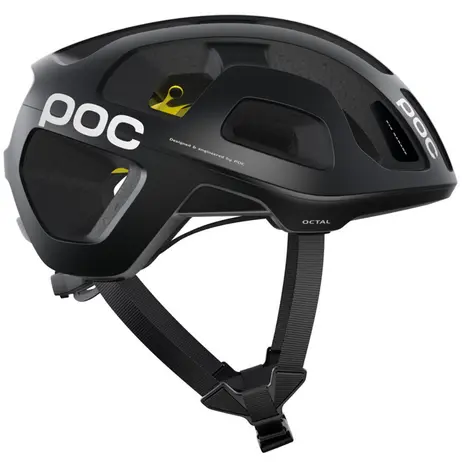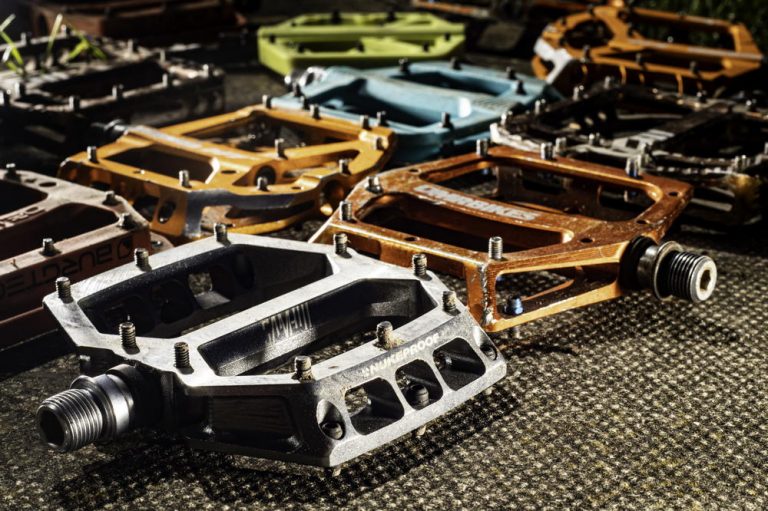A Review Of The Top Indoor Bike Trainers In Australia
A turbo trainer is ideal for doing programmed exercises with one of your bikes at home.
One of the most significant advantages of the finest turbo bike trainers is that you can exercise on your bike no matter how bad the weather is. To avoid any overheating, all you need is a fan.
When riding a bike at home, bike trainers use ANT+ and Bluetooth to track power and speed, and some trainers even pair with apps that direct them to transport you to a virtual reality world of cycling.
Bike trainers are often used by those recovering from an injury or who do not have the confidence to ride on the road. Cyclists who wish to stick to their daily exercise routine also use bike trainers when the weather does not allow them to ride outdoors.
Quick Comparison
Below is a quick comparison of our top picks. Full reviews further down the article.
| Image | Product | Features | Price |
|---|---|---|---|
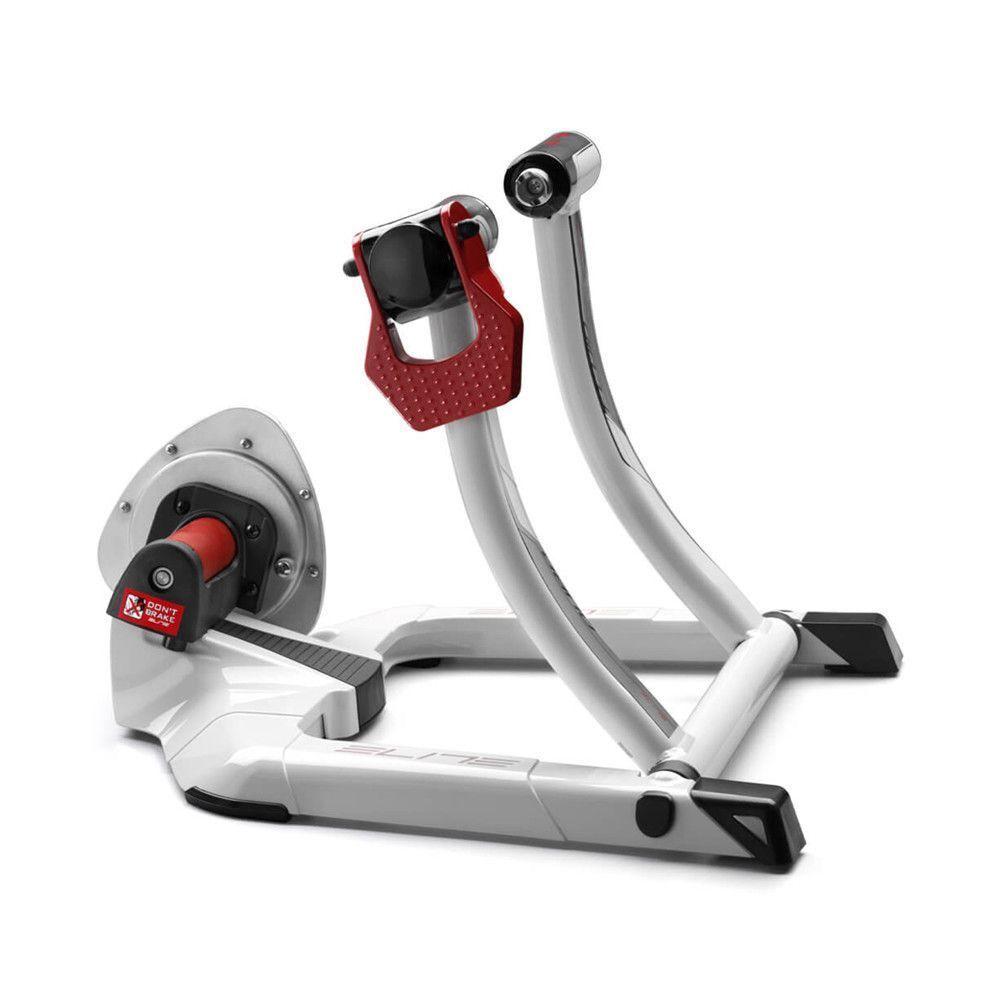 | Best Budget Option - Rated 8.5 / 10 | Check Price | |
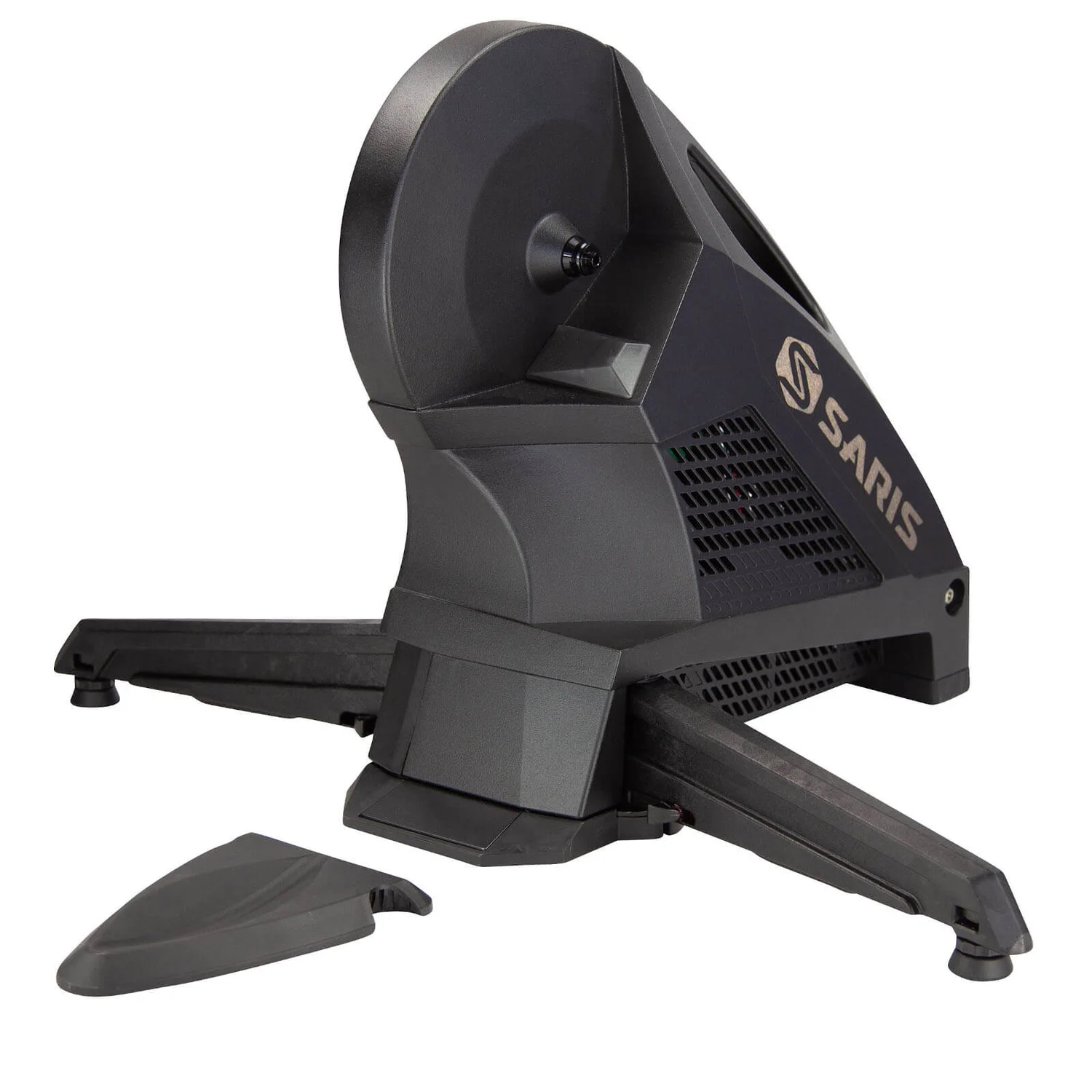 | Rated 8.5 / 10 | Check Price | |
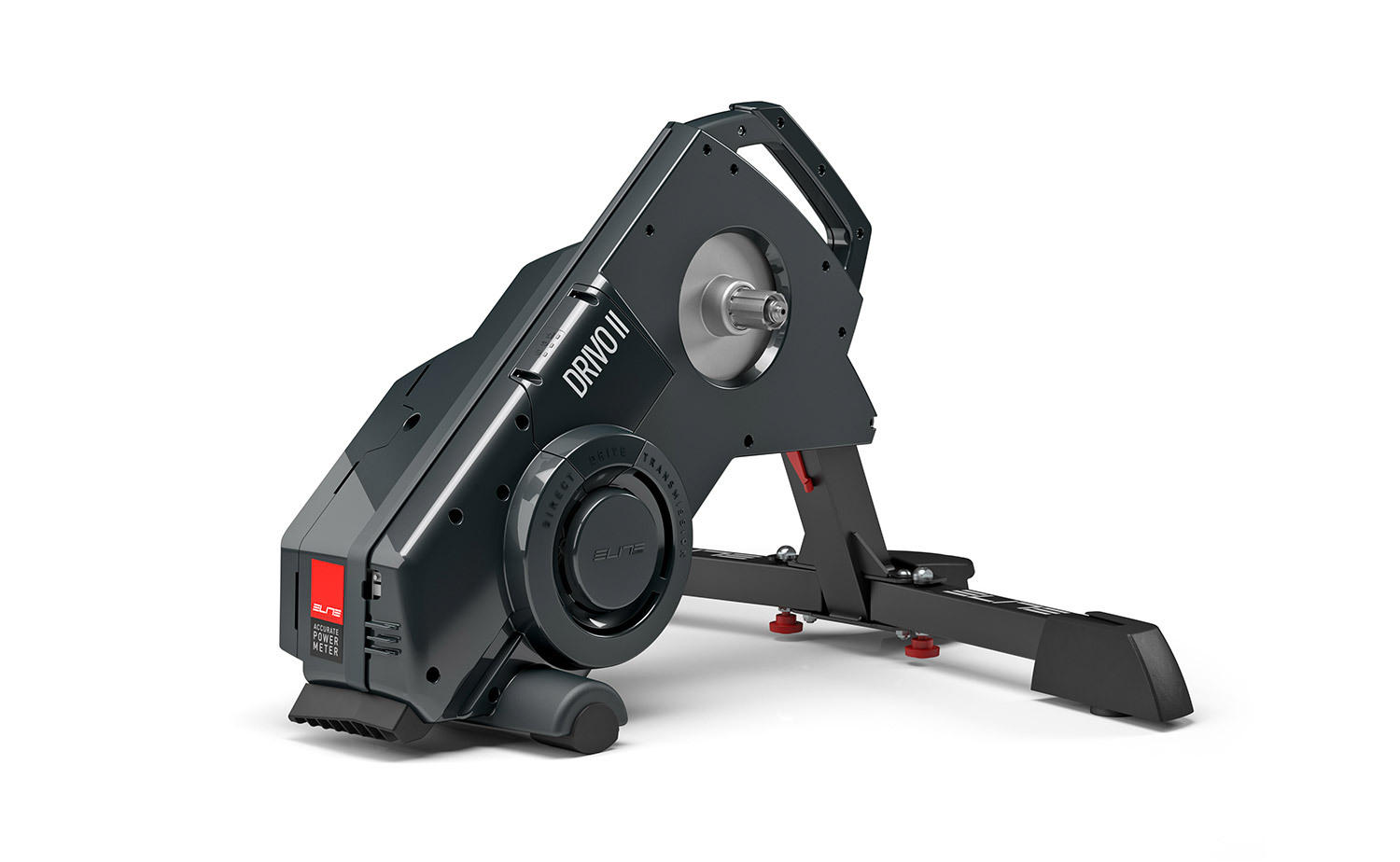 | Rated 9 / 10 | Check Price | |
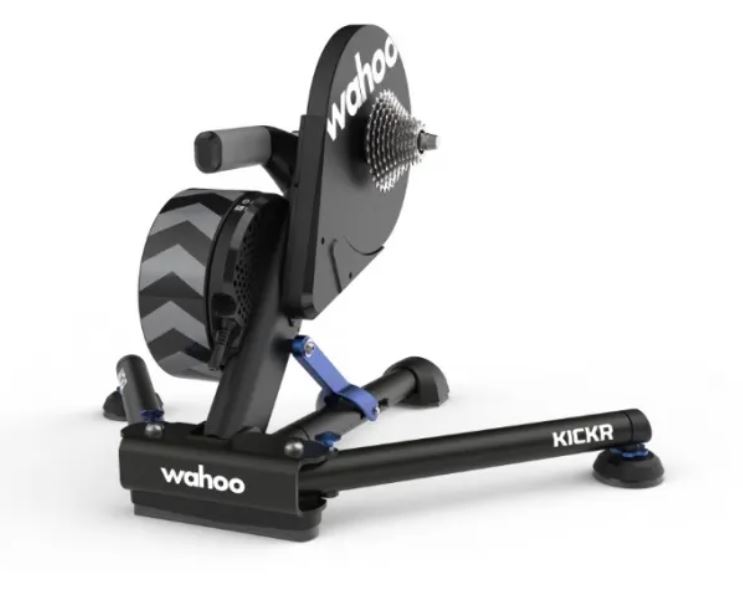 | Rated 8 / 10 | Check Price | |
 | Rated 9 / 10 | Check Price | |
 | Rated 7.8 / 10 | Check Price | |
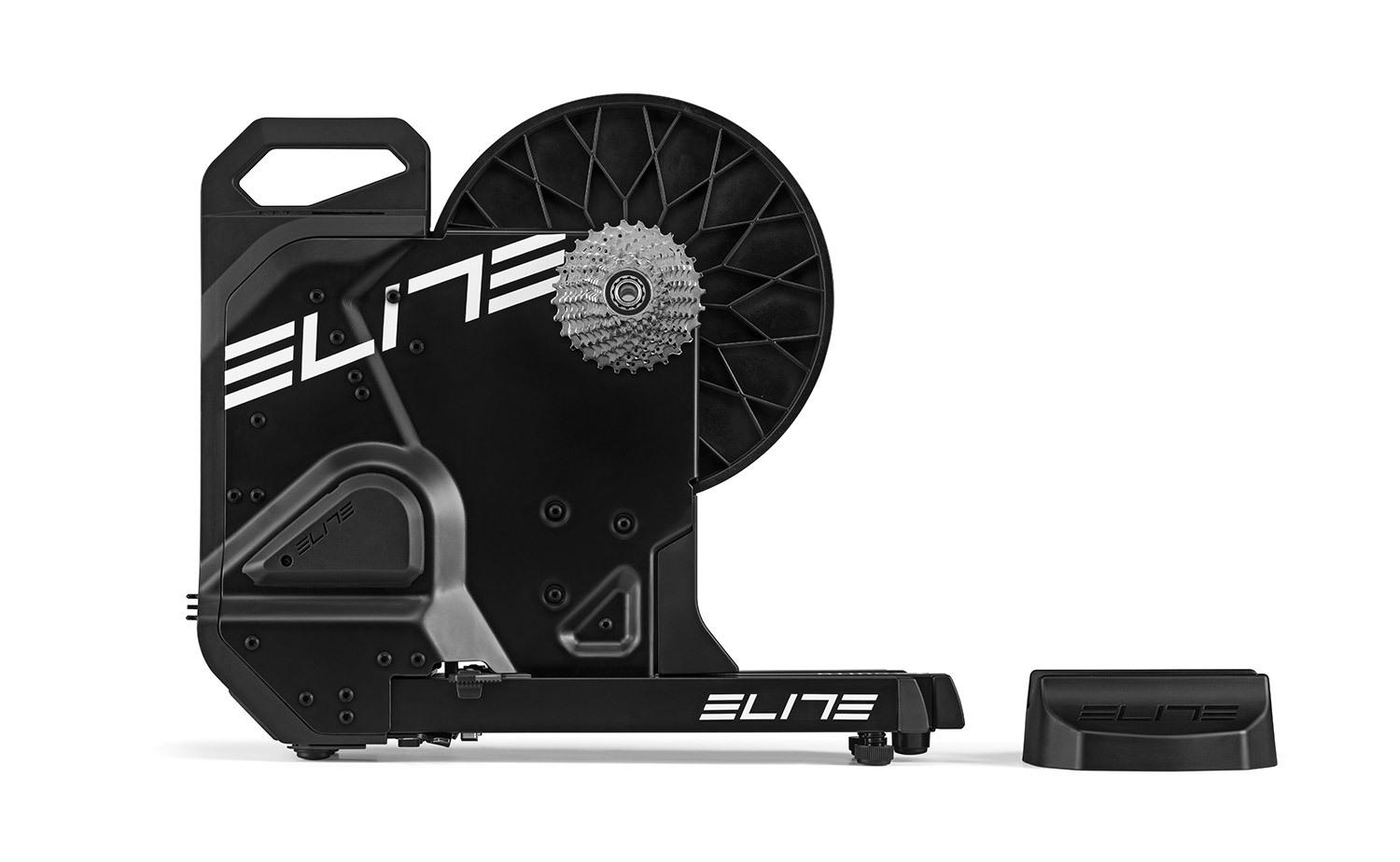 | Rated 8.2 / 10 | Check Price |
Bike Trainer Categories
An indoor bike trainer is a helpful tool whether you are doing indoor training for an event, attempting to maintain a regular riding routine, or prefer the safety of riding inside.
With so many options, which type of indoor trainer should you get? There are many basic types, and the choices have multiplied in recent years, not to mention the growing popularity of “smart” trainers, and the virtual reality, and training programs to which they connect.
Turbo trainers are removable and are easy to fold up and store once your workout is complete. If you prefer a more permanent fixture, you should consider a smart bike or an exercise bike.
Smart Trainers
Smart trainers can link and interact with computer software, and applications. These trainers can employ any of the three resistance types (which we discuss in more depth later).
Ride variables such as traveling over hills, road conditions, and even drafting may be reproduced with the correct smart trainer, and associated software, giving riders a more customized experience. These trainers come with a wide range of functions.
Direct Drive Trainers
A direct-drive trainer bolts onto your bike via the rear dropouts and replace the back wheel. This category of trainers gets its name from its requirement of a cassette directly onto the trainer.
When linked, this type of trainer offers a more stable base, and a smaller footprint (due to the absence of the wheel at the back) than tyre, or roller drive trainers. Resistance mechanisms can be fluid, wind, magnetic, or a mix of all three.
Direct drive trainers offer the advantage of reducing wear on your rear wheel, rear tyre, and cassette. It is also simple to set up, and compatible with a broad range of frame standards.
They are commonly used with mountain bikes because they are compatible with a wide range of bikes, with certain brands, like Elite, offering a mountain bike-specific direct drive trainer. Another significant advantage is that they provide a genuine ride sensation, and superb stability when exerting maximum effort.
A disadvantage of direct drive trainers is that they tend to be more expensive, particularly when you consider in an extra cassette, and bulkier than tyre drive trainers, which means you may need to locate a semi-permanent place for it.
This category of indoor bike trainers requires minimal maintenance and does not require any calibration.
Tyre or Friction Trainers
With the rear wheel in place, a tyre drive trainer connects to your bike via the rear dropouts, fastening to the outside of a quick release lever, or equivalent. An adjustable roller that makes contact with the back tyre provides resistance.
These trainers offer several resistance levels, and are often less expensive, and more lightweight than direct drive trainers. The increased tyre wear produced by the trainer's drum is the main disadvantage of such a trainer.
Tyre drive trainers are ideal for warming up during events or for people who need to store their trainer after each use, all thanks to its lower weight, small footprint, and convenient storage.
Rollers
Riding rollers were the first indoor trainers, and many people still use them to improve their balance, pedaling efficiency, and core strength. Riding them could also be more enjoyable, and realistic than riding motionless trainers.
As you pedal, three drums spin. The size of the drums or the rider's gear selection determines the amount of resistance. Some deluxe models, however, provide additional internal resistance.
They have a simple design, yet they can be challenging to operate because they need concentration and balance.
The Different Resistance Types
The type of resistance your trainer has impacts the cost, road feel, durability, the noise produced, and weight. There are three resistance types they are wind, magnetic, and fluid.
Wind Resistance
Wind trainers were among the first indoor bike trainers to become popular, and they remain popular today. They operate via a spinning fan within the unit, which creates resistance against the air as it spins, and they have a simple design that is both durable and cost-effective.
The faster the rider pedals, the faster the fan spins, and the more resistance is generated. Excessive noise generation, a lack of authentic road feel, and generally non-adjustable resistance are all disadvantages of such a system.
Magnetic Resistance
Magnetic trainers offer resistance using opposing magnets. A magnetized heavy flywheel revolves around another set of magnets in a fixed place. Opposing forces grow as the magnets draw closer, causing an increase in resistance. The cost of a magnetic trainer is determined by how this resistance is regulated.
Some magnetic trainers require riders to disembark, and physically adjust the resistance on the back of the instrument, while others may be adjusted with a lever while riding. Others are managed digitally via an application or computer software.
Fluid Resistance
Fluid trainers are among the most realistic trainers available, as the fluid resistance closely resembles that of the road. Turbine oil is used because it can better handle the heat created when pedaling. The fluid is contained in a chamber with a bladed driving shaft that is propelled by pedaling.
More, stationary flat blades line the inside walls of the chamber, creating resistance to the fluid going through. The resistance gradually builds up as you bike harder, like the wind trainer. Fluid trainers are nearly impossible to overpower, unlike wind trainers, which finally drive all available air out.
These trainers are preferable to magnetic trainers because they provide the most realistic riding experience. The resistance feels like road resistance, and the flywheel allows you to coast without feeling like you are coming to a halt.
The Best Bike Trainers: Direct Drive Smart Turbo Trainers
These bike trainers are portable and store away easily. The direct drive trainers on this list are also smart trainers, which means that they connect to apps like Zwift via their ANT+ and Bluetooth capabilities to make your indoor cycling experience just as rewarding as an outdoor one.
1. Wahoo Fitness Kickr Smart Turbo Trainer
The Wahoo Kickr is one of the best smart trainers yet and has become one of the most dependable, and user-friendly fitness trainers out there. It is perfect for indoor training and has a good ride quality.
Wahoo’s new model is more accurate than the previous version, measuring power to within one percent up to 2,200 watts, and allowing for some side-to-side motion.
It is just enough that riding feels more comfortable than riding while being shackled but not to the point where the bike moved awkwardly. The ride is also more dynamic than the Kickr model before it.
Riders no longer have to spin the trainer down to calibrate it, and the Wahoo Kickr can replicate gradients of up to 20 percent.
It includes an 11-speed Shimano or SRAM compatible cassette that is pre-installed, and it operates with most 8-, 9-, 10-, 11, and 12-speed configurations, and most virtual cycling applications.
The brand's Axis rubber feet can be combined with three sets of plastic cups that slip over the trainer's feet and enable a degree of side-to-side movement, making for a more pleasant ride.
These larger cups fully enclose the rubber feet, and hold the bike trainer in place, while the smaller cups allow the flexible rubber feet to be exposed and allow the bike to move about five degrees to each side.
2. Kinetic Rock and Roll Trainer Smart Two
Kinetic produces some of the world's most successful, and high-quality trainers. Since 1999, they have produced bike trainers in a signature green color. Although the style has constantly evolved since then, they are still a go-to brand.
The Rock and Roll kinetic fluid type direct drive trainer is moderately priced and has received a 4.5-star rating on Amazon. It stands out from the crowd because it provides a more realistic ride experience than most other standard trainers.
This bike can be tilted left to right with this trainer, the way it would in an outdoor road bike experience. Aside from this feature, the fluid resistance unit is among the best in the market, and it even allows beginners to adjust, and control the resistance to suit their needs.
Kinetic in Ride 3 is pre-installed on the bike trainer, allowing the user to connect to different training options via training apps like Kinetic fit. There are no pricey add-ons or sensors needed for a great ride experience. All you need is a level floor, a power outlet, and some willpower.
The app has no control over the bike trainer's power, or fluid resistance, which are determined by gear shift patterns, and pedal speed. Additionally, the number of resistance changes depending on how fast you go, with the highest being 1400 watts at 35 mph.
3. Saris H3
The Saris H3 is the top-of-the-line smart trainer from Saris, and it builds on the success of the H2. One of Saris' major aims was to reduce noise levels, and the H3 succeeds well in this regard, with a noise level of just 61 decibels at 20mph.
The robust 9kg flywheel contributes to a highly genuine ride sensation. It is also a sturdy platform, weighing in at 21.3kg. While this makes it difficult to move about, Saris has included a handle in the design, which makes things a lot simpler.
4. Tacx Neo 2T Smart Trainer
When having a bicycle trainer that functions silently is a must, the Tacx Neo 2T Smart Trainer is well worth considering. Operational silence is crucial with so many great features, and this trainer does not disappoint and is one of the quietest trainers on the market.
The Neo 2T equipment is also appealing to the eye. It has a formidable appearance, which could be attributed to its silky black body, sleek lines, and robust construction. It folds down, and is compact, making it easy to store in confined spaces.
Furthermore, the resistance is provided by 32 magnets rotating around 30 coils, which allows the motor to produce 2000 watts of output while ensuring minimal loss of power, and maximum torque. This resultant power provides the rider with a realistic experience.
Direct drive is used to its full potential with this trainer. The rider does not experience slippage because there is no wheel attached at the back. This bike has more resistance, and a quicker, more precise response time.
5. The Elite Drivo II Interactive Trainer
With an additional wireless interactive software package, this Elite direct drive trainer gives a smooth, and silent home riding experience. It boasts a power accuracy of roughly one percent.
Drivo II is a well-made machine that weighs approximately 33 pounds. Assembly is simple, albeit, unlike most home trainers, it does not come with a cassette, and you must purchase one separately. This set also comes without a skewer.
The massive 13-pound flywheel ensures a smooth pedaling experience, and that the device responds fast, and correctly to gradient adjustments.
Overall, this is a powerful direct drive unit that does not require electrical energy and can be transported anywhere. It is also one of the quietest trainers in the collection.
The Elite Drivo II is dependable, and simple to use. Pair it with software after removing the rear wheel, and securing your bike, then jump on your bike, and begin riding.
6. Elite Suito T
The Elite Suito received a 4.5 star rating from Bike Radar, and the trainer is easy to set up. It comes with a 142mm thru axle and exhibits a noise level of 61 decibels. As you would expect from a direct-drive trainer, the ride feel is great, and the 7.7-pound flywheel does assist in this regard.
An Elite meter link allows you to connect your power meter to the trainer, which is a handy bonus. This means that the trainer provides the same readings as your power meter, ensuring that all your data is synchronized, for simple, and consistent indoor and outdoor training.
Resistance on climbs and acceleration is adequate without any harsh surges, and the Suito has a maximum inclination of 15 percent, which should be enough for most mountain cyclists.
The Suito's highest power output is 1,900 watts, which should be adequate for most users. Sound levels are amazing too, so you should not disturb anyone in the adjacent room while cycling.
7. The Wahoo Kickr Core
The Wahoo Kickr Core is a mid-price bike trainer that gives you great value for money. With the Core, you get many of the features that you would get with the Kickr, but the only notable difference is the size of the flywheel.
There is a difference in the weight of the flywheel on the Kickr and the Core. The Kickr weighs a sturdy 16 pounds, while the Core weighs 12 pounds. The high-end trainer's stronger flywheel was designed to boost the riding feel.
A quick-release thru-axle can be connected directly, but it also includes adaptors for 12, 142mm, and 12, 148mm thru-axles. It does not include a wheel block or cassette.
The turbo trainer unit's legs are fixed and must be fastened out of the box. This is to help keep the price low. It is a quick task that just takes a few minutes, and only needs to be completed once. The legs fold in slightly for storage after construction, but it does not store away as easily as other smart trainers.
8. Elite Directo XR
The Elite Direto XR is the flagship model in the Italian company's current series of smart turbo trainers with direct drive. It can now mimic gradients of up to 24 percent and has a maximum power output of 2300 watts. It should be able to handle anything you expect of a home trainer.
A pre-installed Shimano 105 cassette means you can go riding immediately, which is a welcome improvement. The trainer is quiet and offers smooth riding. It is also very easy to set up and has a 4.5 star rating on Amazon.
9. The Saris M2
The Saris M2 is a low-cost, wheel-on smart trainer that is an excellent entry point into the realm of interactive training for riders on a budget.
Despite its mid-range price and A-frame appearance, this is a full-featured smart trainer with stated power accuracy of around 5 percent. Saris claims that the M2 can handle up to 1,500 watts at 20 mph and can mimic a gradient of up to 15 percent.
The M2 has a motor unit that fits against the rear tyre to offer feedback and resistance, and it comes in a black finish that looks significantly nicer than many other trainers at this price point.
10. Kinetic R1
The Kinetic R1's three percent power outputs are on the low end for a direct-drive machine at this price point, but it does provide something special in the ride-feel aspect that none of the others do. It provides significantly greater freedom to move the bike from side to side than other trainers.
Rubber elastomers control the movement between the legs, and the drive mechanism, which may be modified easily by tightening or loosening the two bolts that keep the elastomers in place.
Unlike the Kickr, which can be adjusted to have no movement, the R1 offers greater lateral mobility than the rest of its competitors even on the most restrictive option.
The Best Bike Trainers: Non-Direct Drive Smart Turbo Trainers
These bike trainers are portable and can be connected to computer software of third-party applications through Bluetooth, or ANT+.
1. Tacx Flow Turbo Trainer
The Tacx Flow Smart finds a nice balance between connectivity, and pricing, allowing you to connect it to platforms like Zwift, TrainerRoad, and others while still enjoying the automatic resistance changes.
Its maximum power is 800 watts, and the maximum incline is 6 percent, which should be sufficient for most riders, while some more powerful cyclists may find they reach the maximum during a full-throttle cycle, or find it lacking on an incline.
This trainer transmits data using Bluetooth, and ANT+, as well as a magnetic resistance unit, and power, cadence, and speed.
The Tacx Flow Smart is not only reasonably priced, but it is also extremely portable, and the tiny flywheel keeps the whole weight to 21 pounds, making it easy to fold, and carry in the back of a car.
2. The Wahoo Kickr Snap
Wahoo's Kickr Snap has a good feel, and controllable resistance with third-party applications like Zwift, and TrainerRoad. It is simple to set up with the snap lever, and it is durable and stable, while still being one of the quietest indoor trainer equipment on the market.
The Snap varies from the original Wahoo Kickr in that it does not require the removal of the rear wheel. With the Snap, you can keep the back wheel on, and the lever snaps the bike securely into place on the trainer following a one-time mechanical width adjustment.
Because the air pressure, wheel, and tires create variables into the power measurement, a calibration is required each time the bike is mounted on the Snap. This is not required by the original Kickr. If you want to use either trainer, you must plug them in.
The turbo trainer has large 10 pound and 4.5-pound flywheels that help to stimulate the inertia of riding outdoors, keeping the rear wheel spinning when you are going fast, and making you work when you are going slow.
3. Elite Qubo B+ Power Smart Trainer
The Elite Qubo is a magnetic non-directive turbo trainer with eight degrees of resistance to choose from. It is Bluetooth, and ANT+ compatible, and if Sufferfest and TrainerRoad do not suit your preferences, Elite's e-training app comes with a 12-month free subscription.
In general, it's a good value-for-money turbo trainer.
The Elite Qubo employs Crono Compass technology, in which the rider's weight has a direct impact on the power output, resulting in a more precise ride sensation.
An auto-controlled resistance can deliver up to 900 watts while also providing ride metrics like power, speed, and cadence.
A red elastogel roller is made of an Elite-developed polyurethane compound that increases tyre adhesion while decreasing noise and limiting tyre wear.
The Qubo is one of the greatest non-direct drive turbo trainers on the market, with a price tag that balances all the crucial elements. It is lightweight, and foldable, as well as its low noise levels, make it an excellent choice for traveling.
4. Saris Basic Mag Smart Trainer
Saris' Basic Mag turbo trainer should be on your list if you just want a turbo trainer to hook bikes up to, and pedal away on.
There are five different levels of resistance to select from, and the magnetic resistance offers an authentic feel, ramping up as you cycle harder.
Saris now offer a Smart Equipped version with a built-in speed sensor that allows you to link directly to your preferred training application, as well as a one-month subscription to the Rouvy online training program, making it an excellent turbo trainer for those on a budget.
The Saris is ideal for just jumping on and riding, and it's a great way to warm up on the road.
Is a Bike Trainer a Worthwhile Investment?
To a cyclist who is concentrating on enhancing specific parts of their cycling abilities, a bike trainer is a must-have to ensure that they stick to a training routine despite the weather.
Most bikes can be used on bike trainers but be sure to check with the manufacturer before you purchase the trainer.
There's a reason why world-class bikers describe themselves as useful. If you live in a region with a lot of bad weather, it might be worth investing in if you would like to keep in shape, and bikes whenever you need to.
When it comes to those wondering which bike trainers the pros use, wonder no more. Most of the direct drive smart trainers on this list are used by famous athletes. Some favorites include
It is probably not a reasonable expenditure for those who like to stay outside, live in a warmer climate, or cycle as a pastime.
Should I Get a Smart Bike Trainer or a Standard Trainer?
The subject of whether people should obtain a smart trainer or a standard trainer is brought up frequently. The type of trainer you choose is up to you, and your preferences.
Be sure to acquire a high-quality trainer of some form, because even a non-smart indoor trainer can help you improve your fitness and continue your training. Consider how much money you have set aside for it before you decide on a trainer.
One thing to keep in mind: setting up a smart trainer is more difficult than setting up a regular trainer. With a standard trainer, you simply remove it from the box, mount your bike on it, clamp it in place, place your front wheel on the block, and begin cycling.
However, with a smart trainer, you remove the wheel, and possibly the cartridge, insert a new cartridge into the smart trainer, connect everything, and then sync the trainer to the app you prefer.
A standard trainer might be more your speed if you want something that is incredibly straightforward to plug-and-play on a random rainy day. It is also preferable if you intend to do most of your cycling outdoors.
Final Thoughts
Bike trainers are great tools for those who take cycling seriously and want to continue achieving their cycling, and fitness goals even when the weather does not allow them to cycle on the open road.
They can also be used to warm up, or for training on the go, so you can take the pleasure of bike riding wherever you want to.
When choosing a bike trainer, be sure to take into consideration the type of trainer, and your budget. These have a direct impact on the type of trainer you choose.
If you are on the hunt for the perfect direct drive or standard bike trainer, you should go through this list of the best indoor cycling trainers available.

